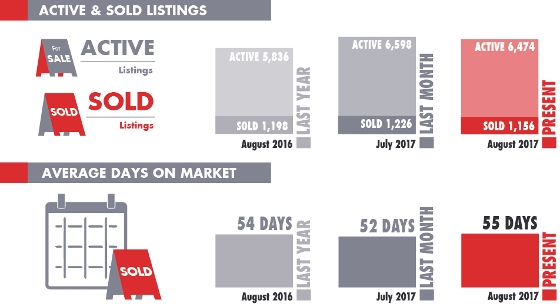New property listed in Zone 56, Edmonton
The real deal: School rankings and House prices
The relationship between the quality of a school district and real estate prices in the neighbourhood is a bit of a “chicken-and-the-egg” question.
The highest-ranking school districts tend to have higher house prices than less sought-after districts. At the same time, more affluent homeowners often live in more popular school districts. It’s not always clear which is the motivating factor: do school districts influence house prices or vice versa?
Regardless of which came first, at the end of the day, the fact remains: schools that have higher rankings are, on average, in neighbourhoods with higher real estate values. According to a survey by the Ontario real estate brokerage TheRedPin, homeowners pay a premium of between 20 to 36 per cent for living in proximity to the best schools in Toronto.
Attracting parents
91 per cent of prospective homebuyers said that school rankings were important in their search, according to a survey by Realtor.com®, and 60 per cent of buyers said they would pay above their budget to live in their desired school catchment.
Why are schools so influential?
In large part, it comes down to the age-old search for better education and opportunities for the next generation. Parents will sacrifice a lot to improve their offspring’s future and a higher-ranking school is part of that.
It’s also a matter of convenience. Once you have your heart set on a school, it’s a huge time-saver to live a bus ride or walk away. The same Realtor.com® survey found that more than half of buyers are willing to give up other comforts – such are more room or proximity to shopping centres – in exchange for living in the right school catchment.
All this, as a total, means there is a huge demand for family homes in certain areas because of school rankings. Even for homeowners without children, a good school is typically seen as a sign of a strong, stable community — a good thing for house prices for everyone who lives nearby.

October - Edmonton Market Update


Things to do in Edmonton this month
Bison’s Eye View - Oct 15
Explore the legends and history of the great bison at Elk Island National Park.
Short Film Festival - Oct 14 to 15
A screening of indie and local films, celebrating Albertan independent filmmaking.
Ladies Learning Code - Oct 21
One day bootcamp workshop for women to learn the fundamentals CSS and how to add custom fonts, icons and animations to websites.
A Caravan Cabaret - Oct 21
Annual party hosted by the Ukrainian Shumka Dancers with music, performances and food.
Inside Painting - Oct 5 to 28
Art show of Peter Ivens’ work that captures Alberta’s landscape and natural beauty. Held at the Art Gallery of St. Albert.
The Monster: Silent Film Screening - Oct 31
Celebrate Halloween and get your scare-fill from watching this oldie but goodie horror-comedy.
New property listed in Zone 20, Edmonton
New property listed in Zone 20, Edmonton
Antique and Modern Doorbell Designs

New property listed in Zone 20, Edmonton
How Do You Choose Your Neighbourhood? Tips, Tricks and Things to Keep in Mind

When you are buying a new home, choosing the right neighbourhood can be just as crucial to consider as the house itself.
In general, people tend to be creatures of habit and, when moving, will look at the neighbourhoods they know best first and opt to stay in the same part of the city that they are accustomed to whenever possible.
But sometimes circumstances like family, work relocation, school or other life events push us into unfamiliar territory and so the search for a new neighbourhood must broaden.
What are the factors that make us choose a specific area or, as the case may be, stay in one location? How can we make more unbiased neighbourhood selections? Here are some questions to ask and factors to consider.
Distance and convenience
Distance from work, school and other daily activities are one of the most important considerations because the impact commutes have on day-to-day quality of life. If you commute by car, what is the traffic like at peak hours? If you take public transit, how accessible is it? How far away are shopping malls, parks and leisure centres? City councils have this kind information publicly available online.
Economics
Price is always a factor. When looking for a new place, make a list of neighbourhoods by price range. Sometimes this means considering different property types—a townhouse in one neighbourhood might be a better fit than a single detached home in another. One way of judging this is by looking at the real facts and MSL sold prices.
Family-friendly
What schools are nearby? What are the neighbourhood demographics like—are there other young families around? Community social statistics and national Statistics Canada reports can give you a taste of what to expect. Looking at where schools, playgrounds and green spaces are located is also important.
Crime
Safety is paramount. Higher levels of home-ownership in an area typically lead to more investment in the community so that is a factor to look at. But also, dig up municipal police reports, available online, to find out what kind of crimes are occurring, how frequently and in which areas.
September- Edmonton Market Update


New property listed in Leduc, Leduc














